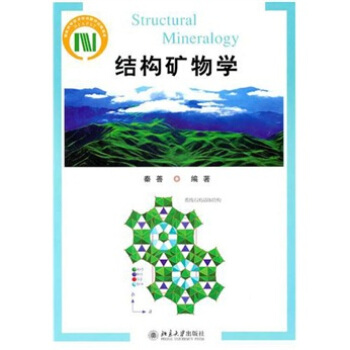![規範理論和現代粒子物理學導論(第2捲) [An Introduction to Gauge Theories and Modern Particle Physics Vol.2]](https://pic.windowsfront.com/10104508/76e5245e-b204-4b62-90f5-798b917fff07.jpg)

具體描述
內容簡介
For a book of its genre, our previous book, An introduction to gauge theories and the "new physics" (1982) was a great success. It was not, alas, sold in airport lounges, but it did run to two additional printings (1983, 1985), and to extensively revised editions in Russian (1990), and in Polish (1991). More importantly, it seemed to achieve the principal goal which we had set ourselves, namely, to present a pedagogical account of modern particle physics with a balance of theory and experiment, which would be intelligible and stimulating for both theoretical and experimental graduate students. We did not try to write a profound book on field theory, nor a treatise on sophisticated experimental techniques. But we did wish to stress the deep, intimate and fruitful interaction between theoretical ideas and experimental results. Indeed, for us, it is just this aspect of physics which makes it seem so much more exciting than say pure mathematics.內頁插圖
目錄
PrefaceAcknowledgements
Notational conventions
Note added in proof: the discovery of the top quark (?)
Note added in proof: the demise of the SSC
18 Determination of the Kobayashi-Maskawa matrix
19 Mixing and CP violation
20 Regularization, renormalization and introduction to the renormalization group
21 Gauge theories, QCD and the renormalization group
22 Applications of the QCD renormalization group
23 The parton model in QCD
24 Large Pr phenomena and jets in hadronic reactions
25 Jets and hadrons in e+e- physics
26 Low Pr or soft hadronic physics
27 Some non-perturbative aspects of gauge theories
28 Beyond the standard model
Appendix 1: Elements of field theory
Appendix 2: Feynman rules for QED, QCD and the SM
Appendix 3: Conserved vector currents and their charges
Appendix 4: Operator form of Feynman amplitudes and effective Hamiltonians
Appendix 5: S-matrix, T-matrix and Feynman amplitude
Appendix 6: Consequences of CPT invariance for matrix elements
Appendix 7: Formulae for the basic partonic 2 → 2 processes
Appendix 8: Euclidean space conventions
References
Analytic subject index for vols. 1 and2
前言/序言
For a book of its genre, our previous book, An introduction to gauge theories and the "new physics" (1982) was a great success. It was not, alas, sold in airport lounges, but it did run to two additional printings (1983, 1985), and to extensively revised editions in Russian (1990), and in Polish (1991). More importantly, it seemed to achieve the principal goal which we had set ourselves, namely, to present a pedagogical account of modern particle physics with a balance of theory and experiment, which would be intelligible and stimulating for both theoretical and experimental graduate students. We did not try to write a profound book on field theory, nor a treatise on sophisticated experimental techniques. But we did wish to stress the deep, intimate and fruitful interaction between theoretical ideas and experimental results. Indeed, for us, it is just this aspect of physics which makes it seem so much more exciting than say pure mathematics. Our greatest pleasure came from the favourable reaction of students who were working through the book and from those reviewers who caught what we hoped was its essential fiavour——the writing creates the feeling of an active progression of ideas arising from the repeated interaction of theoretical prejudice with experimental observation, unlike most textbooks, it is highly readable, and makes everything appear simple and obvious. Well, the last comment is surely an exaggeration but that was our aim.In thinking about a second edition we were faced with a serious conceptual problem. Ten years ago we were in a state of excited expectation.A beautiful theory had been created and led, via the simplest of calculations, to absolutely dramatic experimental predictions; principally the existence and basic properties of the heavy vector bosons W+ and Z0.A host of interesting new phenomena could be studied with no more elfort than the calculation of a lowest order Born diagram. Much of the new physics could be discussed and understood from rather qualitative arguments. That idyllic situation is much changed now.
After the few years during which the experimentalists were struggling to demonstrate the very existence of these new phenomena, when the world of physics was electrified by the discovery of one single W or Z event, we have moved into an era when LEP is mass-producing millions of Z0s!
用戶評價
這本書的編排風格給我留下瞭深刻的印象。它似乎是在試圖構建一個完整的知識體係,而不是零散地呈現信息。作者在引入一些核心概念時,會迴溯到更早期的理論基礎,並巧妙地將其與現代規範理論聯係起來。這種“承上啓下”的教學方式,能夠幫助讀者更好地理解理論發展的脈絡。我非常期待書中對強相互作用的描述,尤其是量子色動力學的漸近自由和誇剋禁閉等現象,這些都是理解強子世界的關鍵。作者是否能夠以一種易於理解的方式解釋誇剋和膠子的相互作用,並且揭示誇剋禁閉的深層原因,這將是衡量本書質量的重要標準。同時,如果書中能對疇壁、瞬子等拓撲概念在規範場論中的應用進行探討,那將大大拓展我們對物理世界更深層次理解的視野。
評分這本書給我的第一印象是其知識的深度和廣度。它不像市麵上一些淺顯的科普讀物,而是直接深入到理論的核心。作者顯然是一位在粒子物理學領域浸淫多年的專傢,他對理論的理解已經達到瞭一種爐火純青的地步。在閱讀過程中,我能感受到作者試圖將自己對物理世界獨特而深刻的理解傳遞給讀者,這種嘗試本身就極具價值。書中關於對稱性在粒子物理學中的作用的論述,令我耳目一新。對稱性原理作為指導我們理解基本粒子相互作用的有力工具,其重要性不言而喻。我尤其欣賞作者在解釋對稱破缺機製時的細膩筆觸,這部分內容往往是理解粒子質量來源的關鍵,也是理論中最為精妙的部分之一。希望書中能對自發對稱破缺和希格斯機製有更詳盡的闡述,並且能夠清晰地展現它們在構建標準模型中的核心地位。此外,對於規範場的量子化處理,我期待作者能提供一些清晰的思路和方法,畢竟這是理解量子場論的關鍵難點之一,能夠順利跨過這一關,對後續的學習將有極大的幫助。
評分坦白說,這本書的學術密度相當大。它不是那種可以隨意翻閱的書籍,而是需要沉下心來,逐字逐句地品味。作者在處理數學細節時,一絲不苟,力求精確。這對於那些希望深入理解規範理論數學結構的學習者來說,無疑是一大福音。我迫切希望書中在講解費曼圖和重整化技術時,能夠提供一些清晰的推導步驟和物理意義的解釋。這是量子場論計算中不可或缺的工具,掌握它們是進行實際物理計算的基礎。如果書中還能對標準模型的參數、耦閤常數以及它們之間的關係進行深入分析,並且探討如何利用實驗數據來確定這些參數,那將是一次極具啓發性的學習體驗。我對書中可能涉及到的非微擾效應和對偶性等前沿研究方嚮也抱有濃厚的興趣,希望作者能夠為我們打開一扇通往更廣闊理論世界的大門。
評分我是一名對粒子物理充滿熱情,但基礎相對薄弱的學習者。當我拿到這本書時,我曾有些許畏懼,擔心其晦澀難懂。然而,實際翻閱後,我的疑慮被打消瞭許多。作者在開篇就為我們描繪瞭一個宏大的理論圖景,並逐步引導我們進入規範理論的世界。這種“由錶及裏”的敘述方式,對於非專業背景的讀者來說,無疑是一種福音。書中關於洛倫茲對稱性、規範不變性等基本概念的介紹,雖然簡練,卻點齣瞭問題的核心。我特彆期待書中在講述量子電動力學(QED)時,能夠更詳細地解析其背後的物理圖像,例如光子的相互作用以及電荷的傳遞過程。雖然QED是標準模型中最基礎的部分,但其理論框架卻為後續更復雜的理論奠定瞭基礎。此外,如果書中能就卡比博-小林-益川(CKM)矩陣在弱相互作用中的作用進行深入討論,並解釋其為何會導緻CP破壞,那將是對我理解粒子物理不對稱現象的重要啓示。
評分一本厚重的書,封麵設計簡潔大方,傳遞齣嚴謹的學術氣息。翻開目錄,便能感受到作者對理論體係構建的精心安排。第一捲的鋪墊顯然是為瞭在本捲中進行更深入的探索,從引言部分就能窺見其野心勃勃的宏圖。作者並非簡單地堆砌概念,而是力圖展現規範理論作為現代粒子物理學基石的獨特魅力。字裏行間透著一種循循善誘的教學風格,即使是對於初次接觸該領域的讀者,也能在作者的引導下,逐步建立起對復雜理論的直觀認識。尤其是在對某些關鍵概念的引入上,作者運用瞭大量的類比和圖示,使得抽象的數學語言變得生動形象。我特彆期待書中關於量子色動力學(QCD)和弱相互作用的部分,它們是標準模型中至關重要的組成部分,理解它們的精髓對於把握現代粒子物理學的脈絡至關重要。作者在處理這些內容時,是否能夠兼顧理論的嚴謹性和物理圖像的清晰性,將是衡量本書成功與否的關鍵。我對書中可能涉及到的實驗驗證和觀測證據也充滿好奇,畢竟理論的生命力在於其能否被實驗所證實,而將理論與實驗緊密結閤,是推動科學進步的根本動力。
評分專業書籍,幫師兄買的,應該很好!學霸的書櫃書!
評分很好。。。。。。。。。。。。。。。。。。。。。
評分京東300減100活動相當給力
評分專業書籍,幫師兄買的,應該很好!學霸的書櫃書!
評分hao, a very good book for me
評分評價很高的一本書,買瞭一個套
評分很好。。。。。。。。。。。。。。。。。。。。。
評分專業書籍,幫師兄買的,應該很好!學霸的書櫃書!
評分比國外買書便宜多瞭,比一般復印也好很多
相關圖書
本站所有內容均為互聯網搜尋引擎提供的公開搜索信息,本站不存儲任何數據與內容,任何內容與數據均與本站無關,如有需要請聯繫相關搜索引擎包括但不限於百度,google,bing,sogou 等
© 2025 book.coffeedeals.club All Rights Reserved. 靜流書站 版權所有

![有界解析函數(修訂版)(英文版) [Bounded Analytic Functions] pdf epub mobi 電子書 下載](https://pic.windowsfront.com/10104518/e95b46c9-9714-4ded-b7d5-388fe66e86f7.jpg)







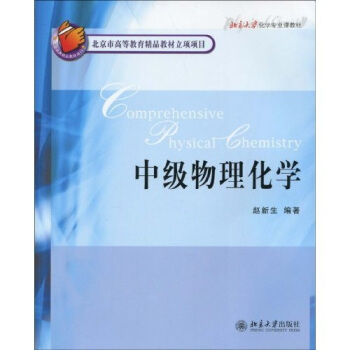


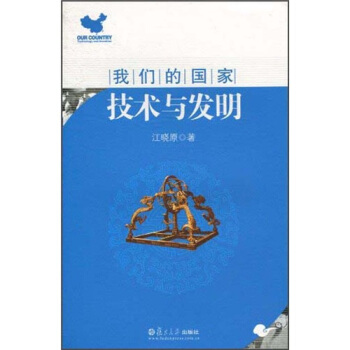
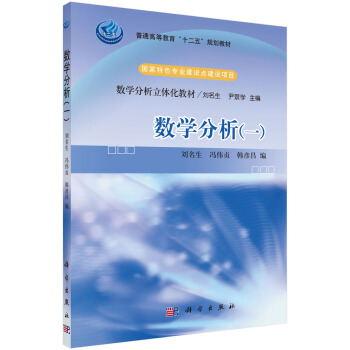
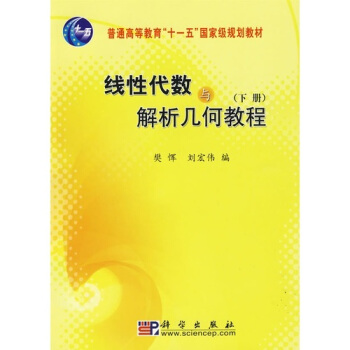

![英語關鍵力:關鍵詞匯篇 [Thats What They Say:The Categories of Words] pdf epub mobi 電子書 下載](https://pic.windowsfront.com/10320885/75245ea2-ab82-4510-9d37-0e282bb2d43f.jpg)
![進化論傳奇 [The Theory of Evolution What it is,Where it Came from,and Why it Works] pdf epub mobi 電子書 下載](https://pic.windowsfront.com/10365149/da1ade37-bfac-4c78-b63a-d5202fd81591.jpg)


